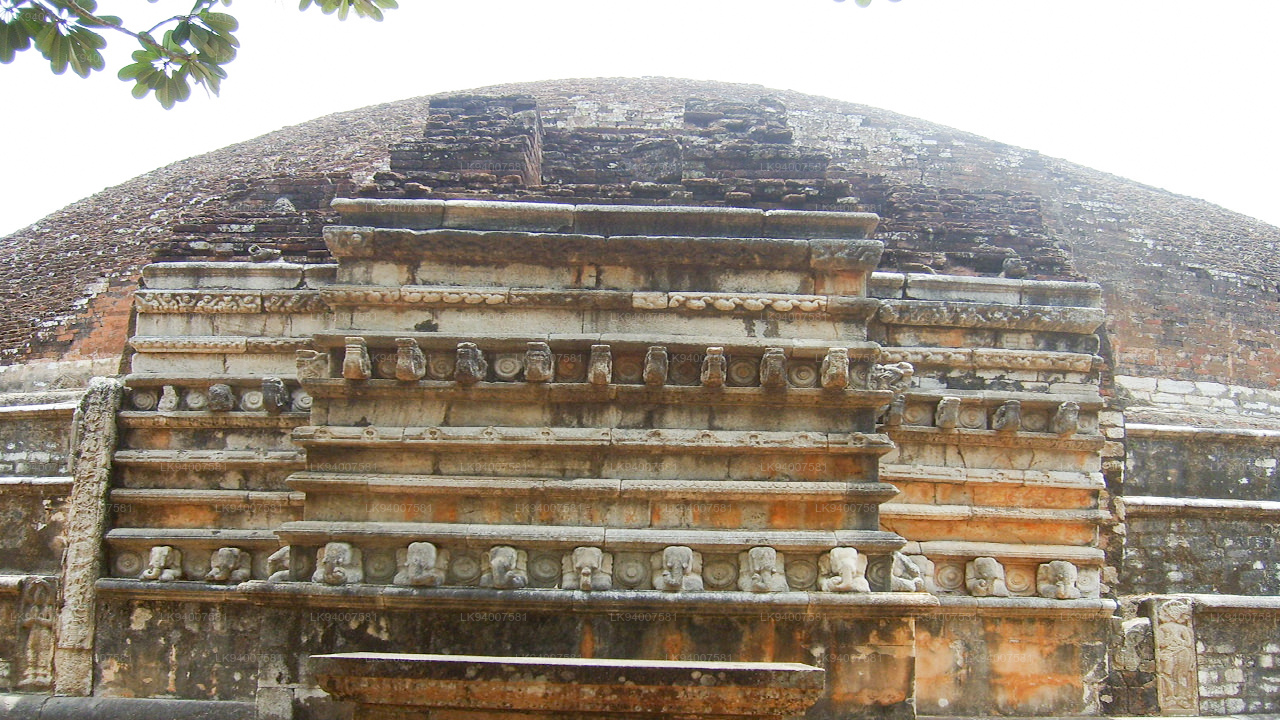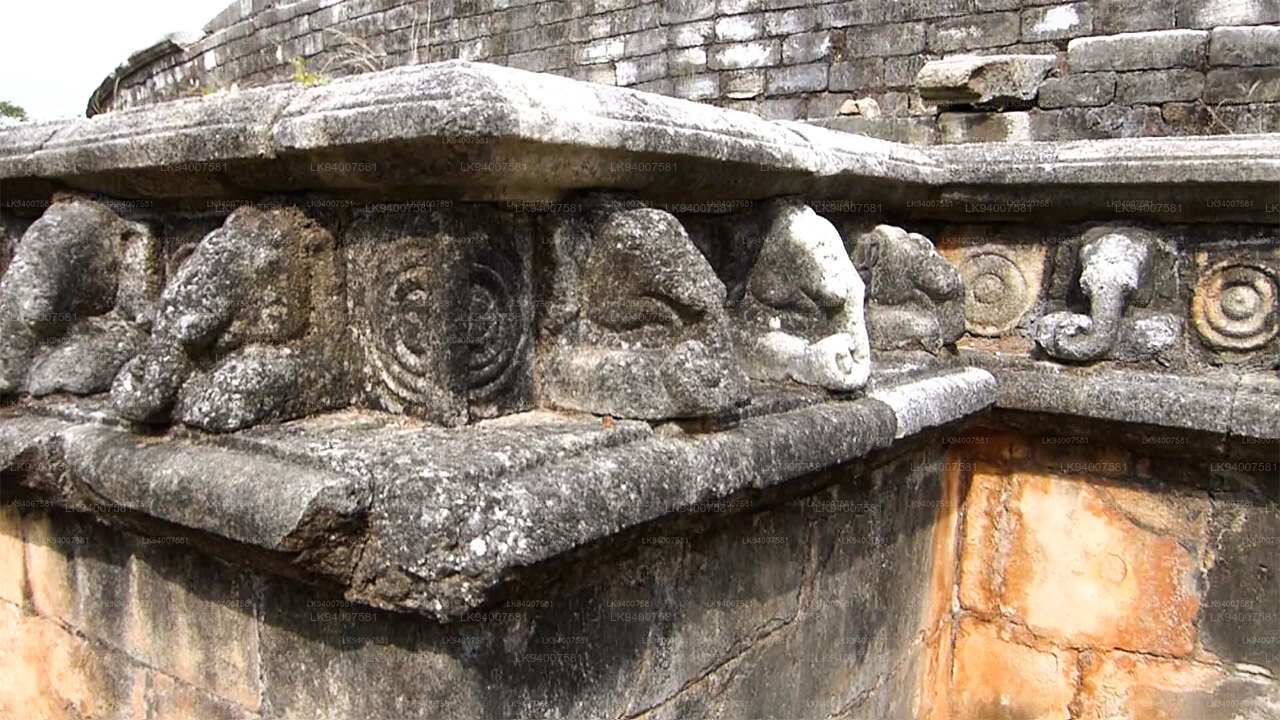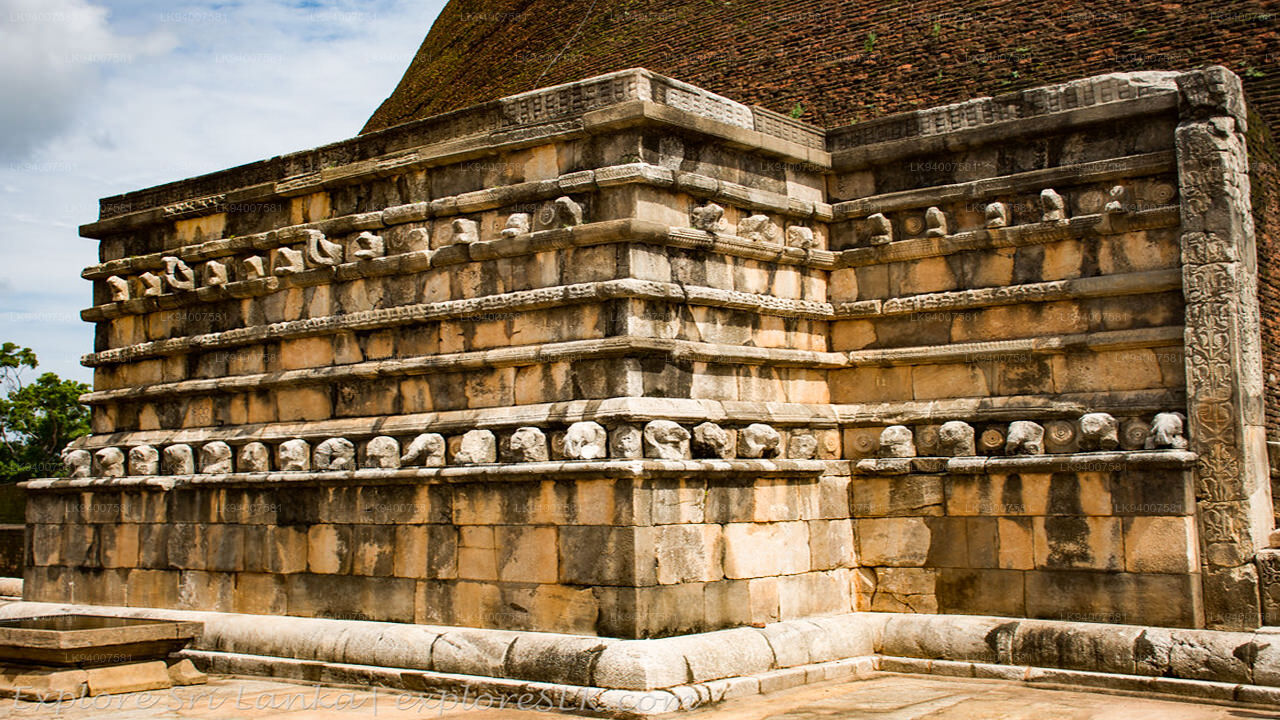
Anuradhapura stad
Anuradhapura tillhör North Central-provinsen i Sri Lanka. Anuradhapura är en av Sri Lankas antika huvudstäder och känd för sina välbevarade ruiner av den forntida lankesiska civilisationen. Staden, som nu är ett UNESCO-världsarv, ligger 205 km norr om den nuvarande huvudstaden Colombo i Sri Lanka.
Kantaka Stupa
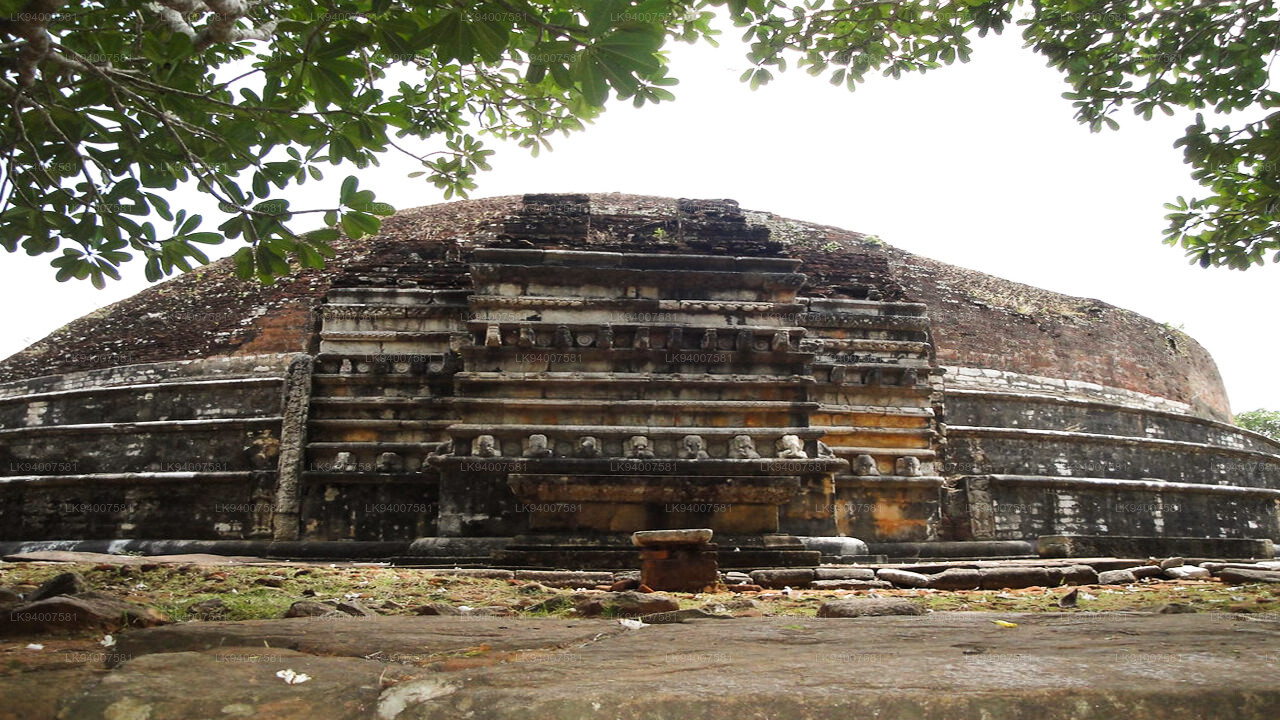
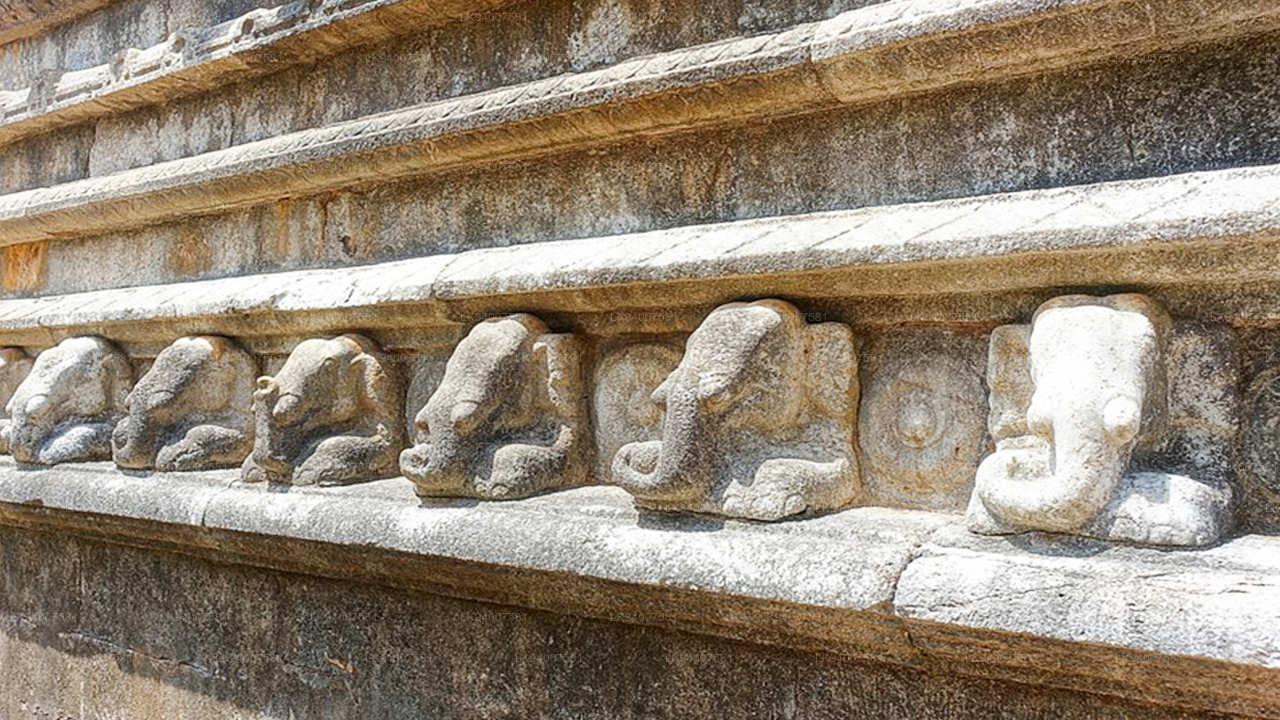
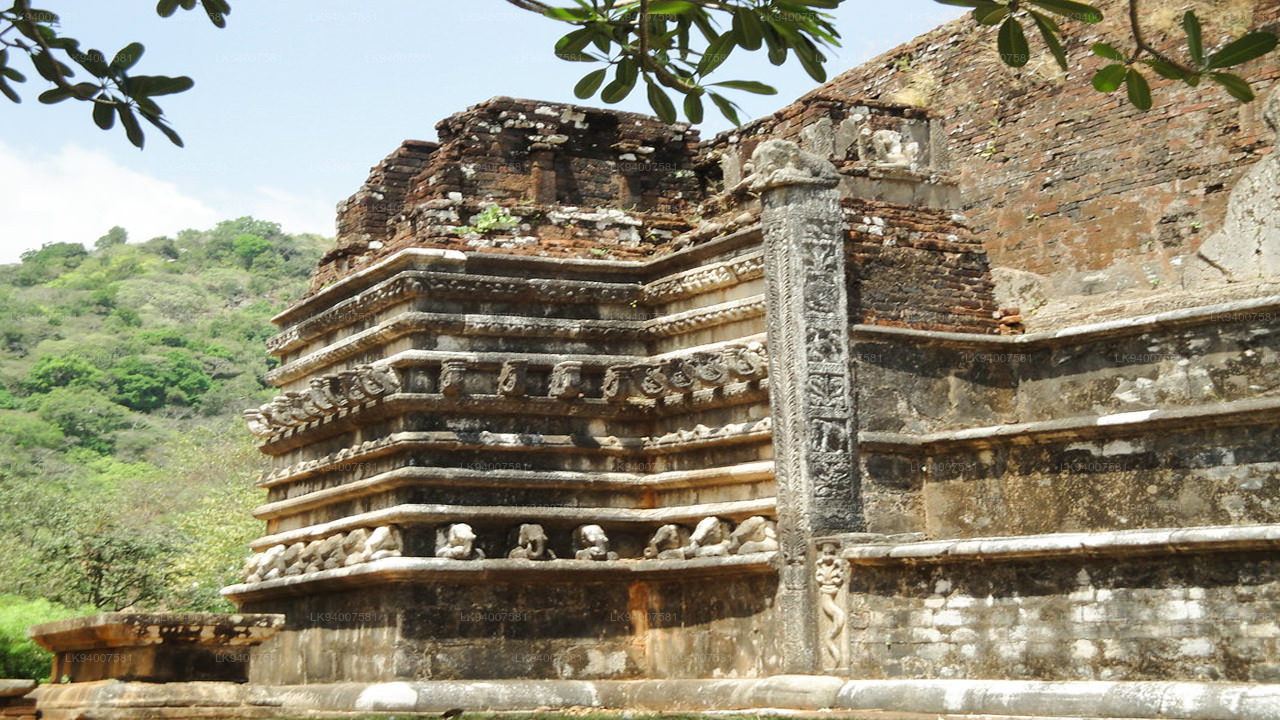
Kantaka Stupa
Kantaka Stupa is a circular stupa having a base circumference of about 425 feet. It has three stepped rims. It has four frontispieces in the four cardinal directions. The frontispiece is called Vaahalkada. All the Vaahalkadas are decorated with sculptures of dwarfs, animals, human, divine figures and floral motifs. One of the most important of the sculptures on the Kantaka Cethiya Vaahalkada is the elephant headed God with two arms. The Saivites call it Ganapati or Ganeesaa. The Ganapati sculptures in the Vaahalkadas of the Kantaka Cetiya have created confusion among the archaeologists and historians. No one could not explain the connection between Ganapati God and Buddhism. Thus, the Sinhalese historians and archaeologists have tried to give some imaginary interpretation.
The four vahaalkadas facing the four cardinal points have different animals on the top of the square pillars - the elephant on the east, the lion on the north, the horse on the west and the bull on the south.
Most of the Indian and Sri Lankan archaeologists believe that there is a symbolic relationship between these animals and the four cardinal directions. But, they differ in associating a particular animal with a particular direction.
History Of Kantaka Stupa
The Sinhalese archaeologists and historians say that King Suratissa have built this Stupa. The Pesavalalu and the frontispiece have been preserved to a great extent. There are ruins of the stupa which are 40 ft (12 m) in height. The monks would have resided in the caves close to the stupa. As this stupa was renovated by King Lajjitissa. There is no doubt that this belongs to the 1st century B.C.
Om Anuradhapura-distriktet
Anuradhapura tillhör North Central-provinsen i Sri Lanka. Anuradhapura är en av Sri Lankas antika huvudstäder och känd för sina välbevarade ruiner av den forntida lankesiska civilisationen. Staden, som nu finns med på UNESCOs världsarvslista, ligger 205 km norr om den nuvarande huvudstaden Colombo i Sri Lanka. I den heliga staden Anuradhapura och i närheten finns ett stort antal ruiner. Ruinerna består av tre typer av byggnader: dagobor, klosterbyggnader och pokuna (dammar). Staden hade några av de mest komplexa bevattningssystemen i den antika världen, belägna i landets torra zon och administrationen byggde många tankar för att bevattna marken. De flesta civila är singaleser, medan tamiler och srilankesiska morer bor i distriktet.
Om norra centrala provinsen
North Central-provinsen, som är den största provinsen i landet, täcker 16 % av landets totala landyta. North Central-provinsen består av två distrikt som heter Polonnaruwa och Anuradhapure. Anuradhapura är det största distriktet i Sri Lanka. Dess yta är 7 128 km². North Central-provinsen har många potentialer för investerare att starta sina företag, särskilt jordbruk, agrobaserade industrier och boskapssektorn. Mer än 65 % av North Central-provinsens befolkning är beroende av grundläggande jordbruk och agrobasindustrier. NCP kallas även "Wew Bendi Rajje" eftersom det finns mer än 3 000 medelstora och stora dammar i provinsen. Sri maha bodiya, Ruwanweli seya, Thuparama dageba, Abayagiri-klostret, Polonnaruwa Rankot wehera och Lankathilake är rädda.

